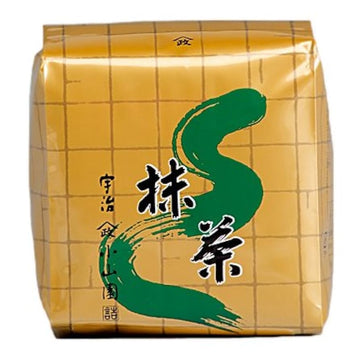Senjin-No-Mukashi
-
Express tracked delivery:Oct 21 - Oct 25
-
Free Shipping & Returns: On all orders over
CHF 500 ($650/£470)
Senjin-No-Mukashi
Koicha Grade Uji Matcha is highly recommended for preparing both usucha (thin tea) and koicha (thick tea).
Originating from Kyoto Prefecture, Japan, Yamamasa Koyamaen’s entry-level koicha offers a pleasantly full-bodied profile with a mild flavour. When prepared as a thick tea (koicha), it presents a harmonious blend of robust, sweet, and subtly astringent notes. The aftertaste is distinguished by intense green flavours complemented by nuances of toasted seeds and roasted coffee beans. Conversely, when served as a thin tea (usucha), it delivers a spectrum of light, delightfully creamy sweet flavours, resulting in a more transparent and ethereal experience compared to the subsequent tea on our list, Shikibu no Mukashi. For optimal preparation, use water heated to 95°C for koicha and between 80-85°C for usucha.
The term "Senjin no Mukashi" (先陣の昔) translates to "vanguard of the past," with "Senjin" denoting the vanguard—the first to arrive or advance, positioned ahead of others.
Regarding the usage of "mukashi" and "shiro" in tea nomenclature, these expressions carry grading implications and serve to differentiate between thick and thin teas, respectively. Historically, only "mukashi" was likely employed, with "shiro" emerging later.
The word "mukashi" is believed to be derived from the combination of the Chinese characters for "twenty" (廿) and "day" (日), with March 20th (廿日) of the lunar calendar traditionally regarded as the date for harvesting the finest tea leaves.
The term "shiro" gained prevalence during the era of the third shogun, Tokugawa Iemitsu, reportedly originating when feudal lords requested Uji tea masters to produce tea that was “thin” or “light.” Although the precise meaning of "shiro" at that time remains unclear, it is thought to have referred to taste variations, as historical records indicate that Furuta Oribe preferred darker green tea, whereas Kobori Enshu favored a lighter brew. This distinction between 'dark' and 'light' tea may also reflect differing tea preparation methods in Uji.
While alternative theories regarding the origins of "mukashi" and "shiro" exist, it is reasonably certain that "mukashi" has been in use since ancient times, with "shiro" becoming common from the Edo period onward. Subsequent generations of tea masters replaced the traditional term "mukashi" with "shiro," both of which had been used to denote tea grades, thereby establishing "shiro" as the standard terminology.
In summary, although the historical evolution of the tea ceremony has influenced the meanings of "shiro" and "mukashi," these terms continue to embody the trends and transformations of their respective eras and remain integral to contemporary tea culture.
“All items are sold in their original packaging from the manufacturer. Sealed and unopened.”



